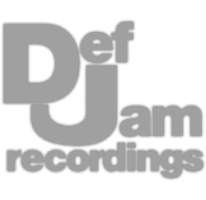Professional Analog Mastering.
Professional Analog Mastering.










ZL or zero latency Equalizer is a free alternative to the Pro-Q3, Kirchoff EQ, and similar parametric dynamic EQs.
With it, I don’t need to do too much - I just want to balance the vocal before I continue the chain.
So, everything below the fundamental is attenuated with a HP filter, then the fundamental range is boosted very slightly.
The range containing the vocal’s 2nd and 3rd-order harmonics is reduced a little to keep it from sounding muddy. Again, not much is needed if the filter is attenuating the right range.
The nasal tones, which are typically the 4th, 5th, and 6th order harmonics, are also attenuated slightly.
Lastly, a dynamic bell filter centered on the sibilance is enough to avoid using a de-esser.
I’ll use a quick attack to capture the transient, and a slightly longer release to create a smooth sound in the range.
LALA is an LA2A emulation. It results in a full and present, yet overall smooth and pleasant sound due to the attack and release characteristics of optical compression.
There isn’t much I need to do here - I’ll simply increase the peak reduction until I achieve about 3-6dB of attenuation. How much you compress will vary from vocal to vocal, but since my next processor will also control dynamics, I’m using it subtly.
With the peaks attenuated and controlled, I’ll introduce makeup gain to compensate for the new additional headroom.
Let’s take a listen to the original vocal, followed by the equalized, and then compressed.
Watch the video to learn more >
The JS Inflator is a 1:1 remake of the popular Oxford Inflator. Its job is to very subtly waveshape the quietest aspects of a waveform, amplify them, and reduce the dynamic range from the noise floor up.
This makes it a great addition to peak compression. The compressor attenuates from the top down, and the inflator brings quiet details up, causing a dense vocal when combined.
How much you use depends on the recording and the genre, but a positive curve with a moderate effect value accomplishes a lot.
I recommend keeping the clip function off since it alters the gradual threshold of the plugin and then lowering the output to compensate for loudness changes so that it doesn’t just sound better since it is louder. This will make it easier to find the right settings without any bias.
More is a simple but good-sounding distortion plugin.
It doesn’t offer more functions than needed, and the ones it offers allow for a lot of control.
For a vocal, the Tube Input Stage is a great algorithm. Then, I’d recommend setting the effect to its maximum amount before lowering the dry/wet to a low percentage.
This way, you ensure distortion occurs and the saturator’s threshold is consistently hit - letting you blend in a constantly distorted signal to affect the timbre as needed.
The low-pass pre-distortion filter is also really useful - I’d recommend cutting the highs so that they don’t distort and make the highs harsh.
Since we’re blending in such a low amount with the dry/wet, this filter acts more like an internal side-chain that keeps the highs from hitting the saturator.
The previous insert, the JS inflator adds odd harmonics, so introducing some tube distortion blends nicely due to the even harmonics.
Together, they create a dense and complex sound, so let’s take a listen to them being introduced.
Watch the video to learn more >
Delay Modulation is a combination of delay and frequency modulation - it allows for very mild chorusing.
When working on a lead vocal, you don’t want audible chorusing, just enough to make the vocal sound larger.
Additionally, very small modulation to the pitch makes the vocal sound more in tune since listeners will hear the average pitch.
I’d recommend using a short time of about 3ms, low feedback, and low depth, which causes just a small variation in pitch, and then varying the rate until it blends seamlessly in with the vocal.
Lastly, lower the mix until the vocal sounds full, without noticeable chorusing when played within the context of the mix.
Magic7 is a free emulation of the Bricasti M7 - I’m pretty sure it uses impulse responses from the unit, so it’s a convenient way to achieve the sound of the unit.
Reverb is very subjective, so I won’t say which one to pick. A short pre-delay will keep the vocal’s transients from washing out by pushing the reverb back slightly.
The built-in duck feature compresses the initial hit of the reverb, which will also keep the vocal from becoming washed out.
A little less low and a little added air go a long way to make the vocal sound clear and detailed with an enjoyable ethereal sound.
Then, blend it in within the context of the mix to understand how much reverb is just enough. This comes down to personal taste, the genre, and whether you want it audible or just as support.
The last insert is arguably the most important, but first, let's listen to DLYM and Magic 7. Notice how they give the vocal a polished sound - especially since the vocal was first balanced, dynamically controlled, and already had the timbre we wanted.
Watch the video to learn more >
Poortec is a stripped-down Pultec EQ emulation. This has quickly become one of my favorite plugins since it allows for control over what I believe to be the most important aspect of any signal.
That being the low mids and the high mids.
A small dip to the low mids and a small boost to the high mids does more to a signal to just about any processor.
The low mids are incredibly dense, the high mids are responsible for clarity.
This combination can bring any instrument into the forefront, which is perfect for lead vocals.
Let’s take a listen to how much this EQ accomplishes with some very simple filters.